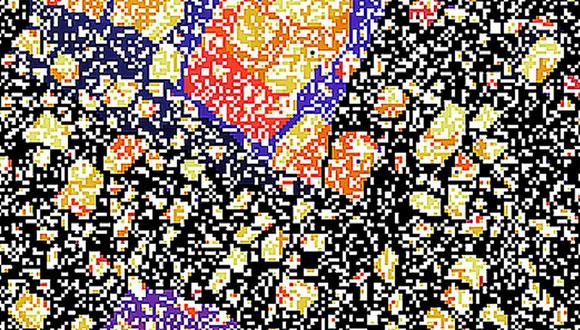סמינר לפיזיקה של מערכות ביולוגיות וחומרים רכים: Calcium gating and ball-and-chain inactivation in potassium channels
Prof. Crina Nimigean & Prof. Simon Scheuring, Weill Cornell Medical School, USA
10:15 - Prof. Crina Nimigean, Weill Cornell Medical School, USA
Calcium gating and ball-and-chain inactivation in potassium channels
Abstract:
Inactivation is the process by which ion channels terminate ion flux through pores while opening stimulus is still present. In neurons, inactivation of both Na and K channels is crucial for action potential generation and regulation of firing frequency. It has been proposed that a cytoplasmic domain of the channel complex plugs the open pore to inactivate it via a “ball-and-chain” mechanism, but no structural evidence of this had been observed. We used cryo-EM to determine the gating mechanism in Ca2+-activated K channels by obtaining structures of a purely Ca2+-gated and inactivating MthK channel in a lipid environment. We obtained structural evidence of a ball-and-chain inactivation mechanism in these channels in the presence of Ca2+. In the absence of Ca2+ we obtained a structure in closed state, where the bundle-crossing is sterically shut but where fenestrations are no
w visible between subunits, connecting the channel pore with the lipid bilayers. We showed that these fenestrations are the pathways that quaternary amine channel blockers use to access the channel pore in the closed state, highlighting a novel state-dependent access for potential drugs in this channel family. In addition, we showed that a reassessment may be needed about inferring gate location from channel block experiments when multiple access pathways into the pore are available. Finally, we found that ball-and-chain inactivation in MthK channels is highly lipid bilayer thickness dependent. We determined that this is not due to a change of the channel pore dimensions (the receptor site for the inactivation peptide) in the different thickness bilayers, but rather that the linkage to the channel is important. The inactivation peptide binds more frequently and for more extended times to the thicker than thinner lipid bilayers, thus offering an additional interaction site for the inactivation peptide, outside of the pore, that is more heavily occupied in thicker bilayers. These results highlight the ease of modulating channel activity by simply changing bilayer thickness.
11:05 - Prof. Simon Scheuring, Weill Cornell Medical School, USA
Breaking Speed and Resolution Limitations of High-Speed Atomic Force Microscopy for Membrane Protein Structure-Dynamics Analysis”
Abstract:
High-speed atomic force microscopy (HS-AFM) is a powerful technique that provides dynamic movies of biomolecules at work [1]. We successfully used HS-AFM to take movies and determine dynamic parameters of membrane trafficking systems, transporters and channels.
To break current temporal limitations to characterize molecular dynamics using HS-AFM, we developed HS-AFM line scanning (HS-AFM-LS) and HS-AFM height spectroscopy (HS-AFM-HS), methods whereby we scan the HS-AFM tip along a single scan line or keep it at a fixed position, respectively, and detect the motions of the molecules under the tip. This gives sub-nanometer spatial resolution combined with millisecond and microseconds temporal resolution of molecular fluctuations. HS-AFM-LS and HS-AFM-HS can be used in conjunction with HS-AFM imaging, thus giving access to a wide dynamic range [1]. This allowed us most recently to determine the single molecule kinetics of wild-type bacteriorhodopsin [2].
To break current resolution limitations, we developed Localization AFM (LAFM). By applying localization image reconstruction algorithms to peak positions in high-speed AFM and conventional AFM data, we increase the resolution beyond the limits set by the tip radius and reach quasi-atomic resolution on soft protein surfaces in native and dynamic conditions. The LAFM method allows the calculation of high-resolution maps from either images of many molecules or many images of a single molecule acquired over time, opening new avenues for single molecule structural analysis [3].
References:
[1] Heath et al. Nature Communications, 2018, 9(1):4983, High-Speed AFM Height Spectroscopy (HS-AFM-HS): Microsecond dynamics of unlabeled biomolecules
[2] Perrino et al., Nature Communications, 2021 12(7225), doi.org/10.1038/s41467-021-27580-2, Single molecule kinetics of bacteriorhodopsin by HS-AFM.
[3] Heath et al. Nature, 2021, 594(7863):385–390, doi:10.1038/s41586-021


